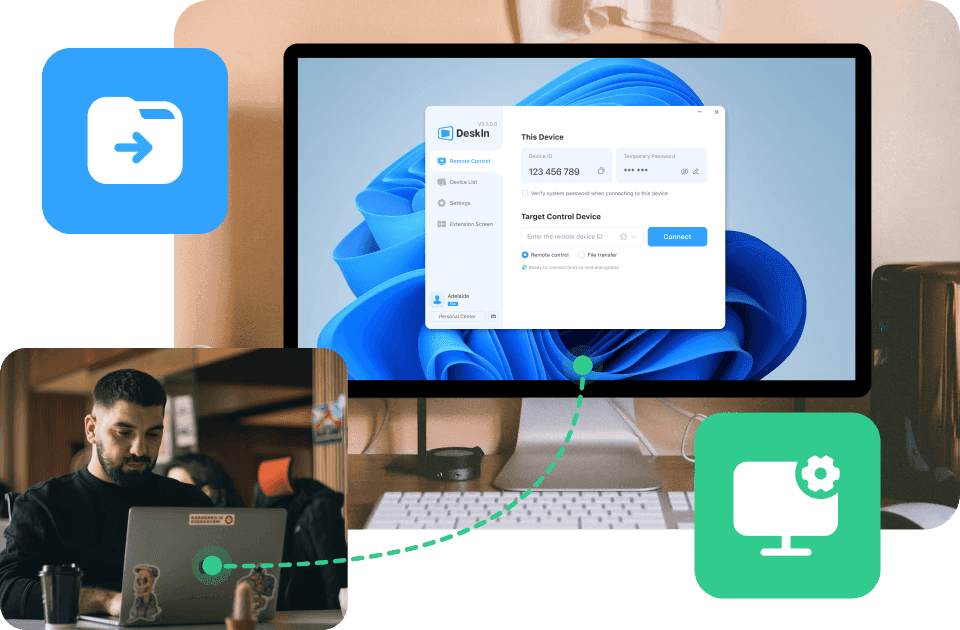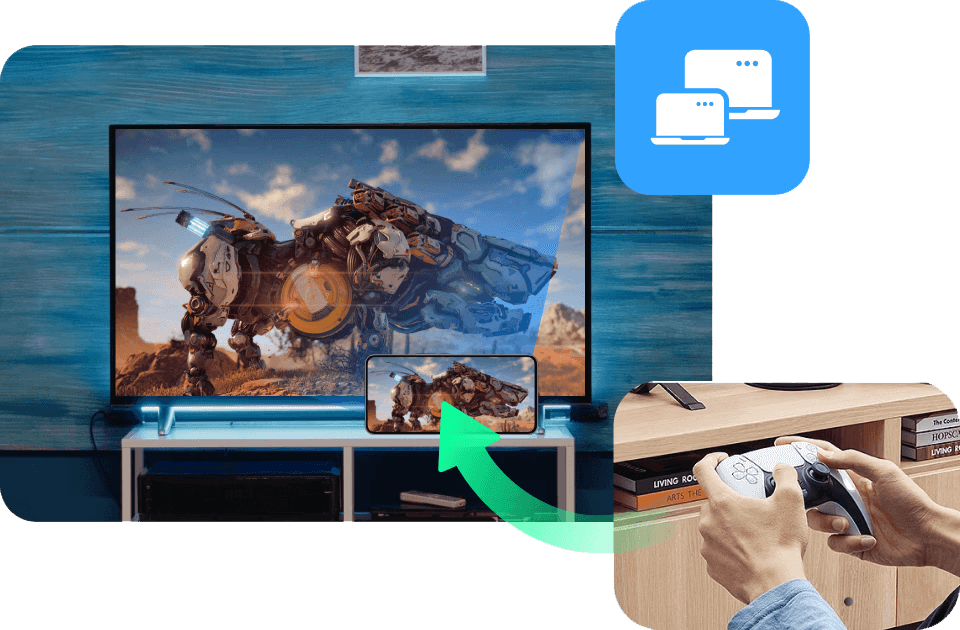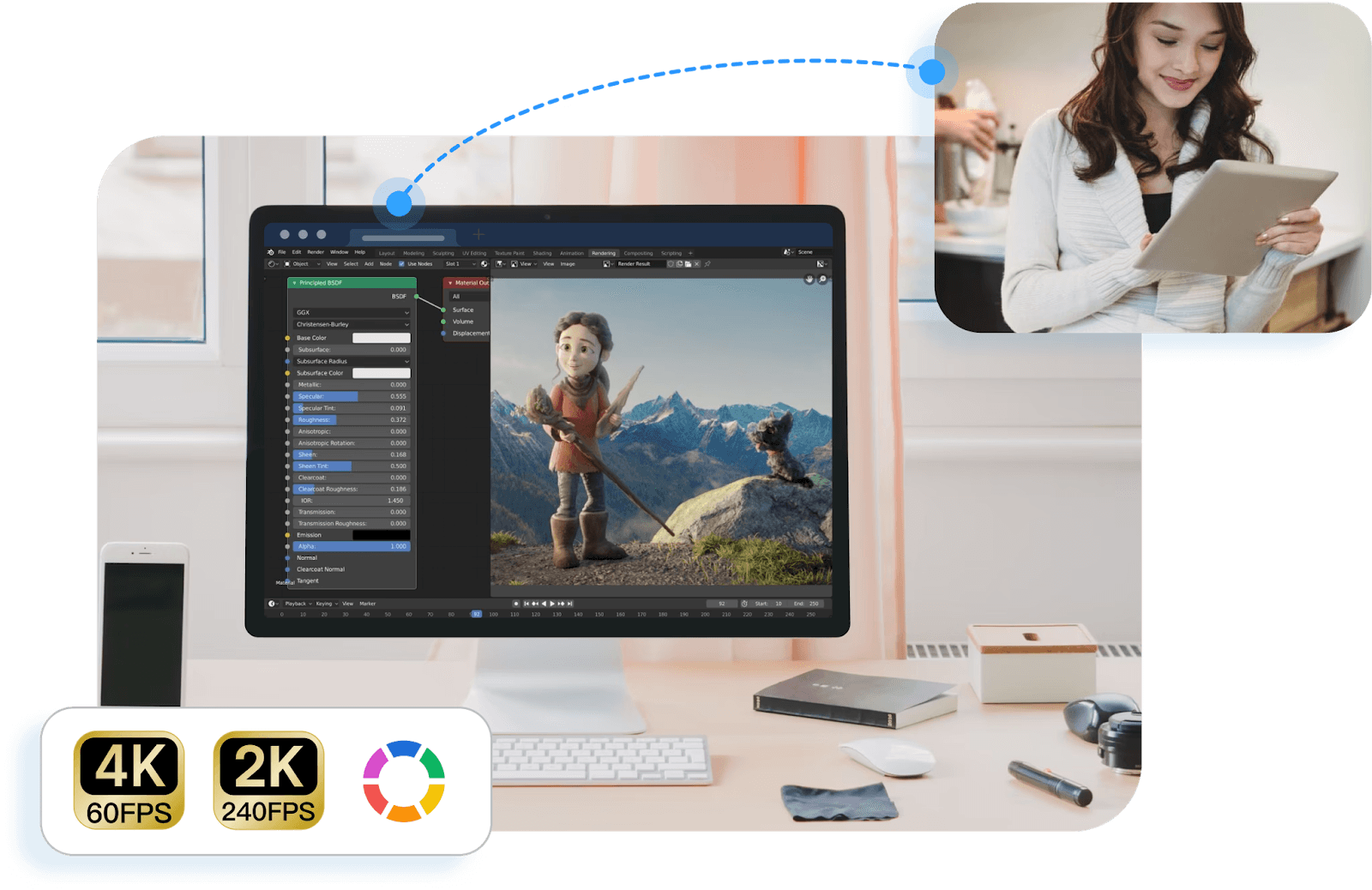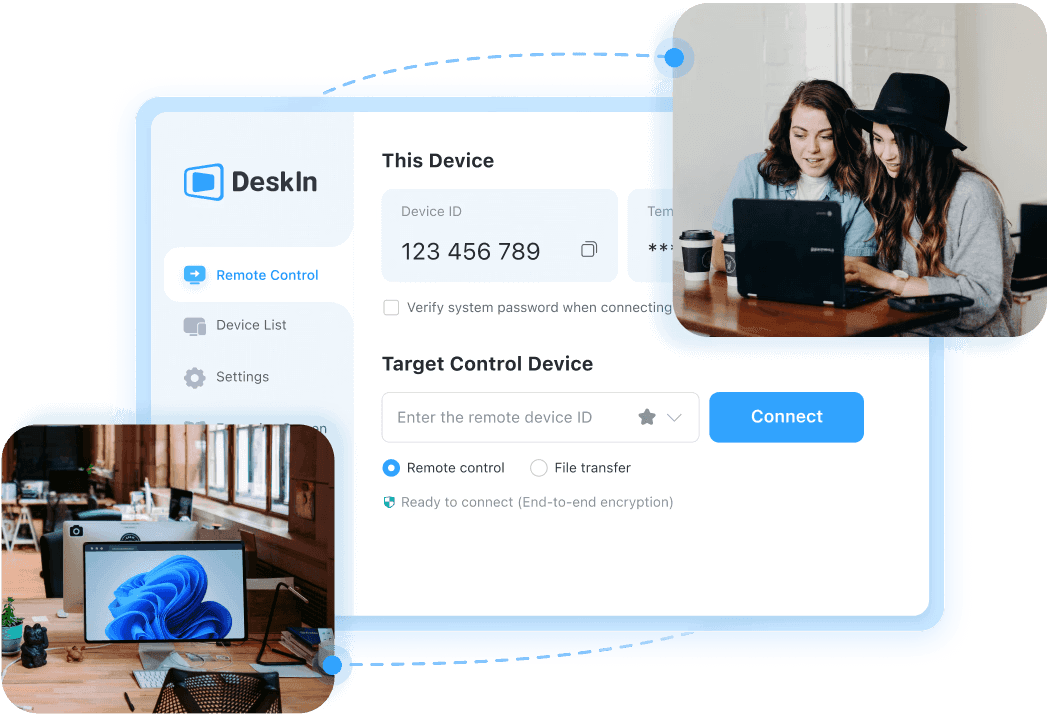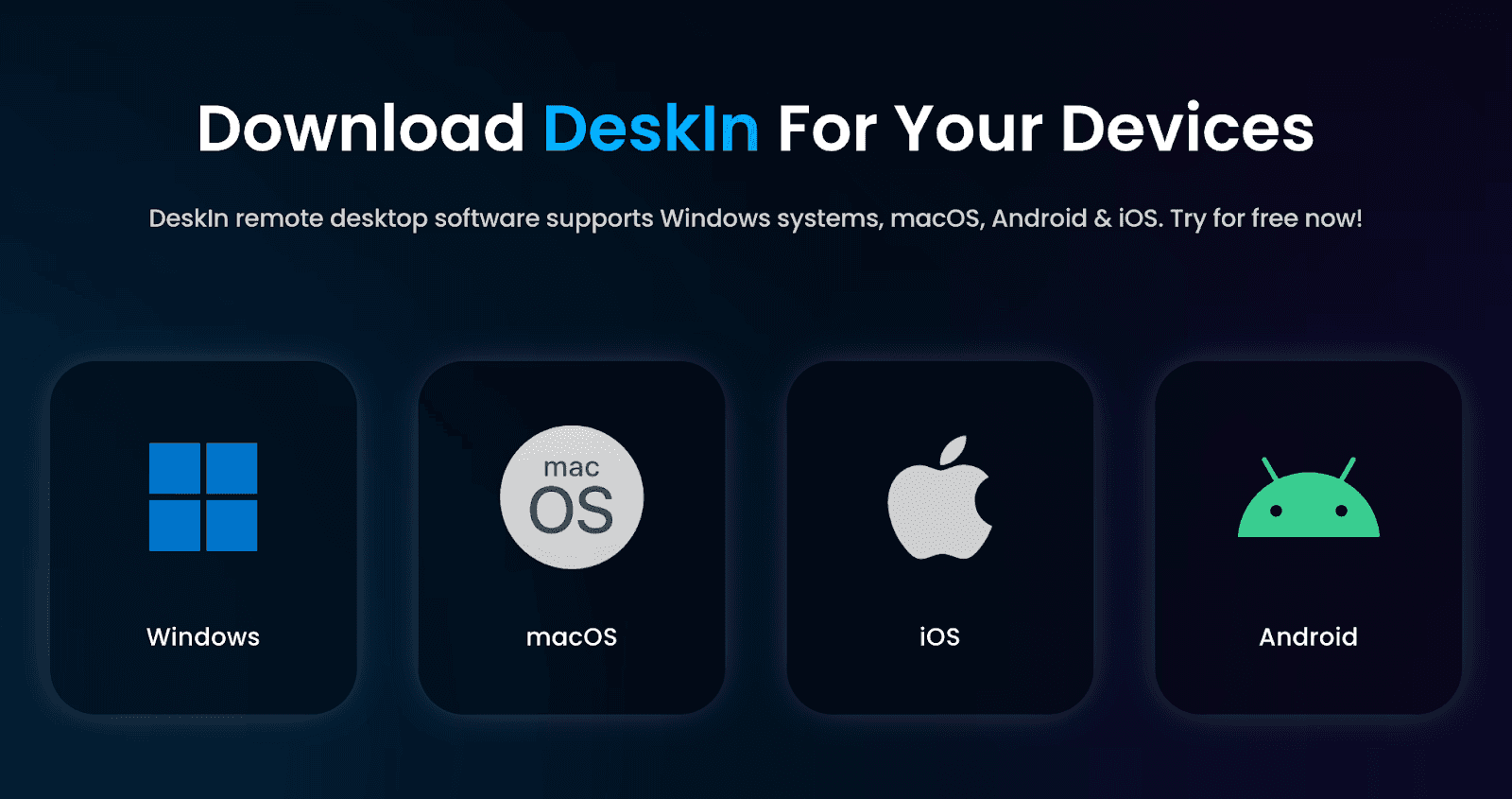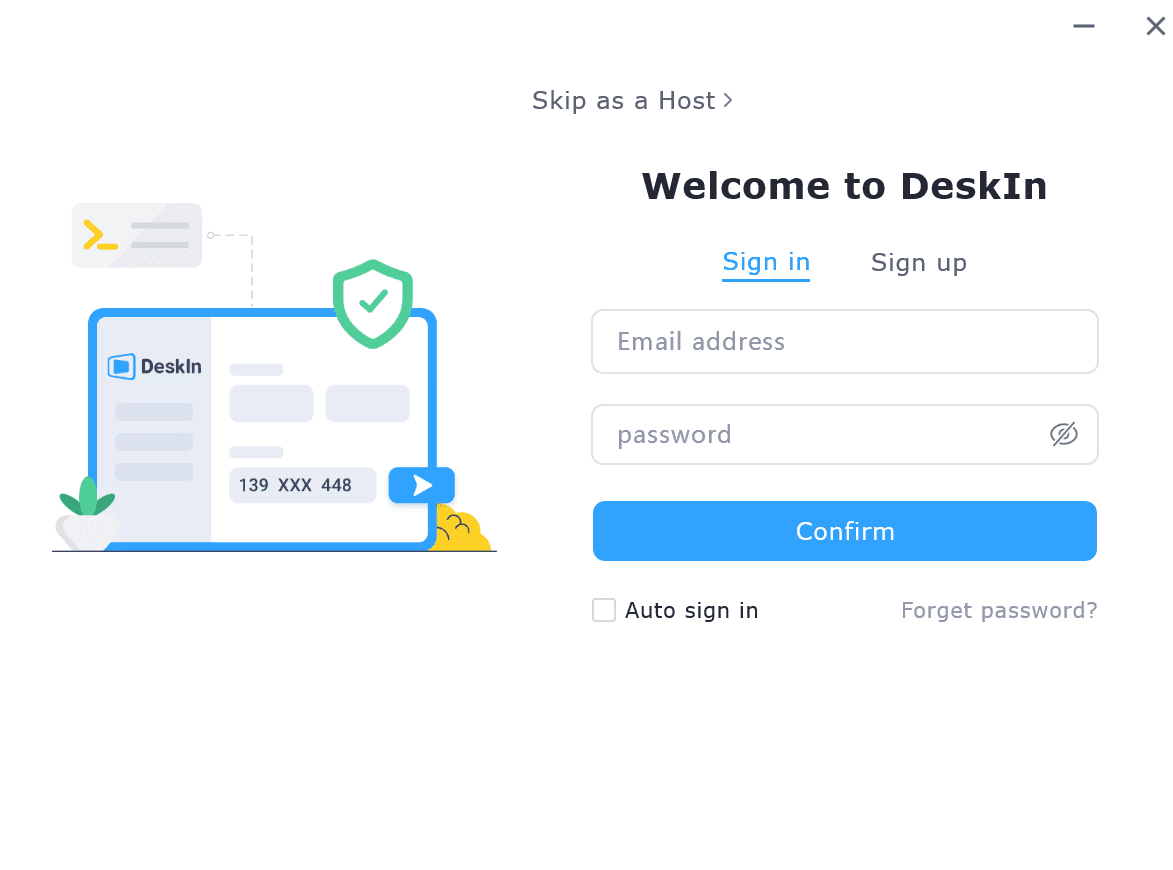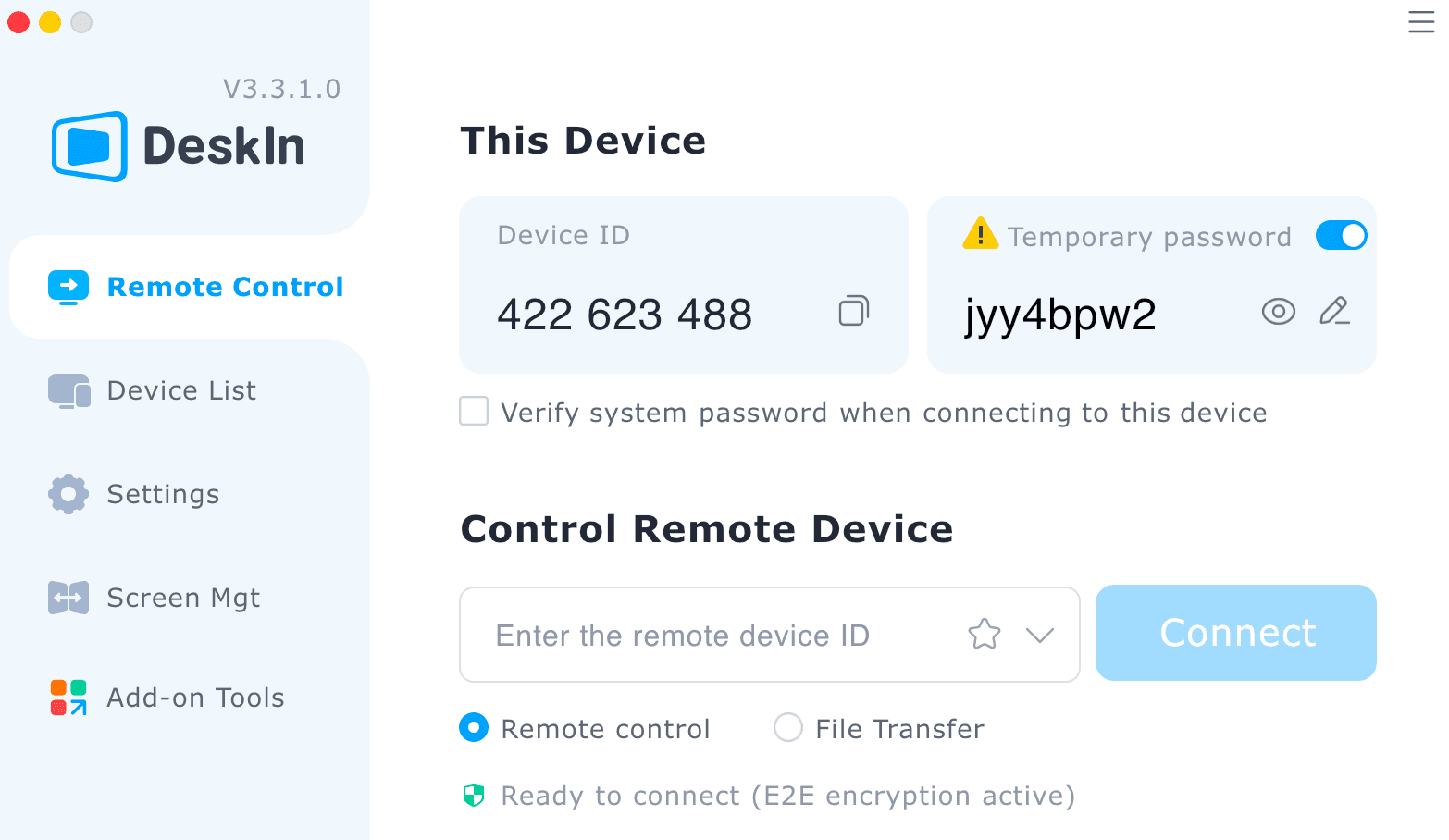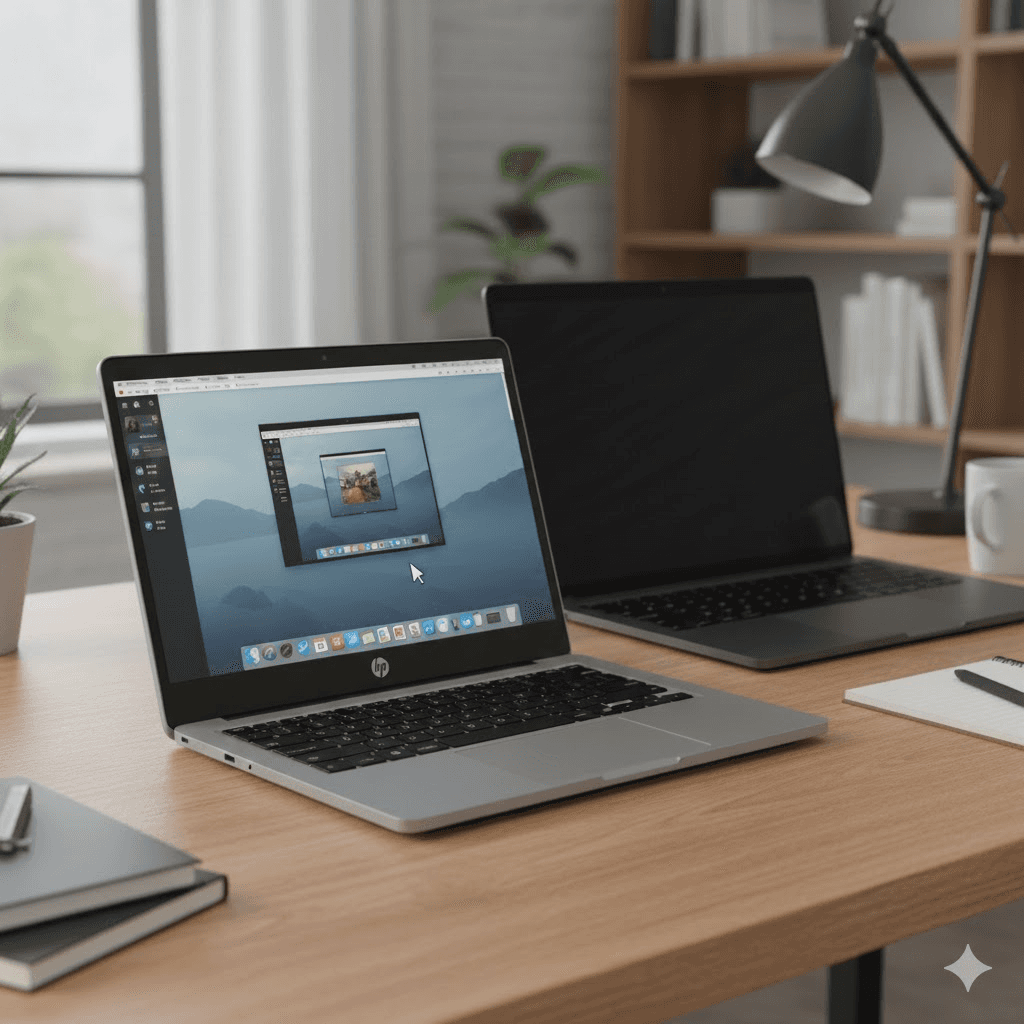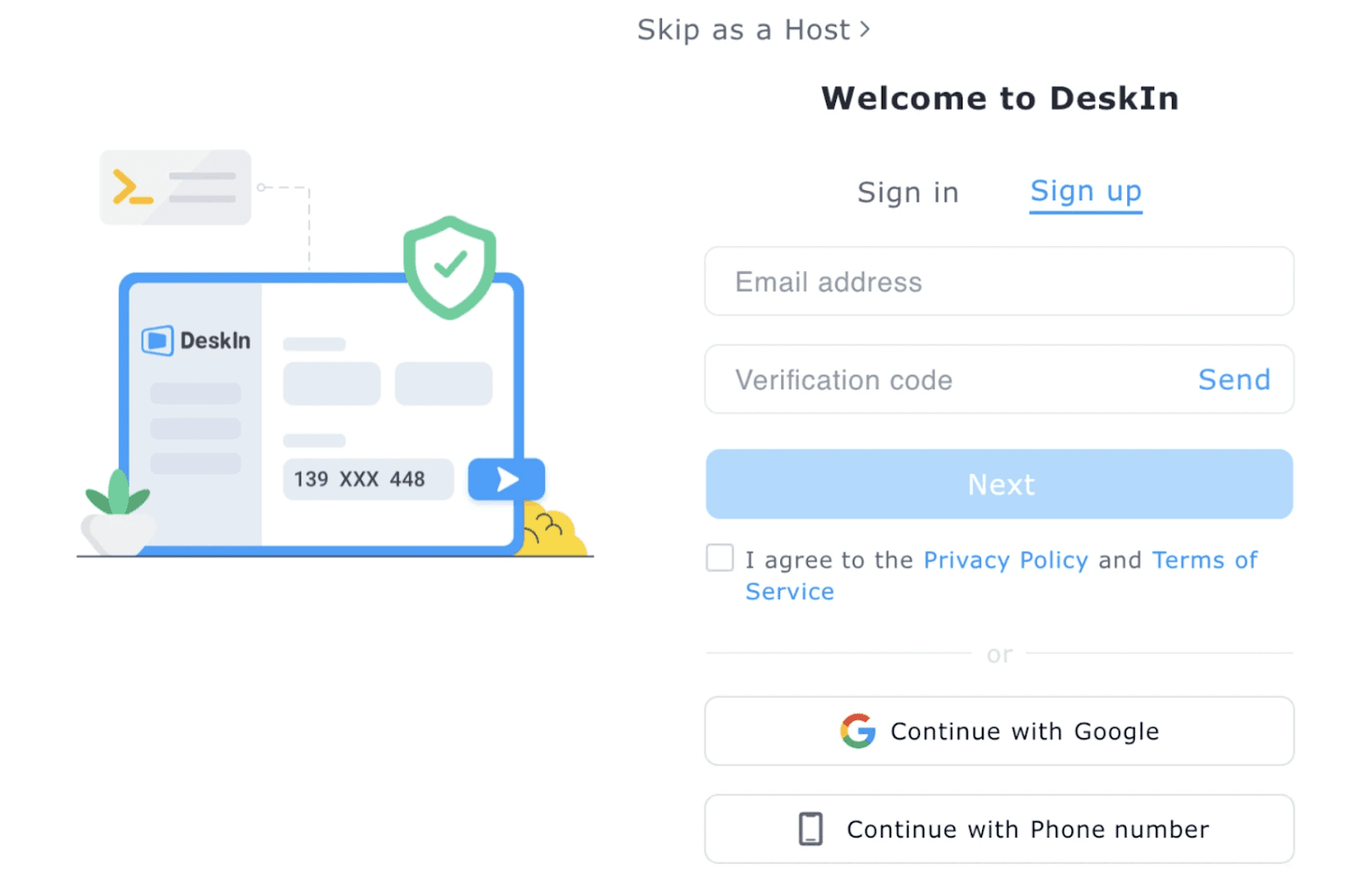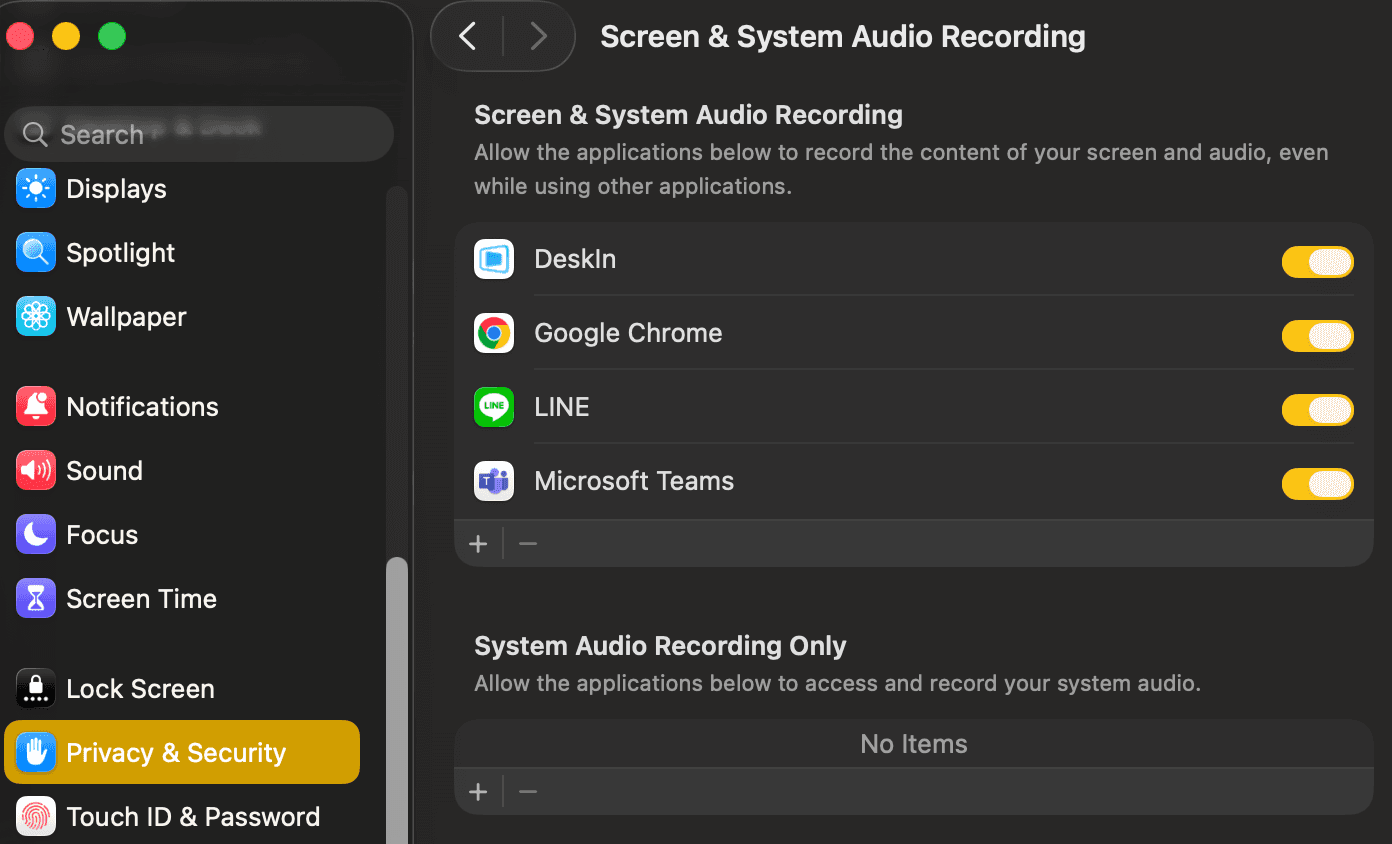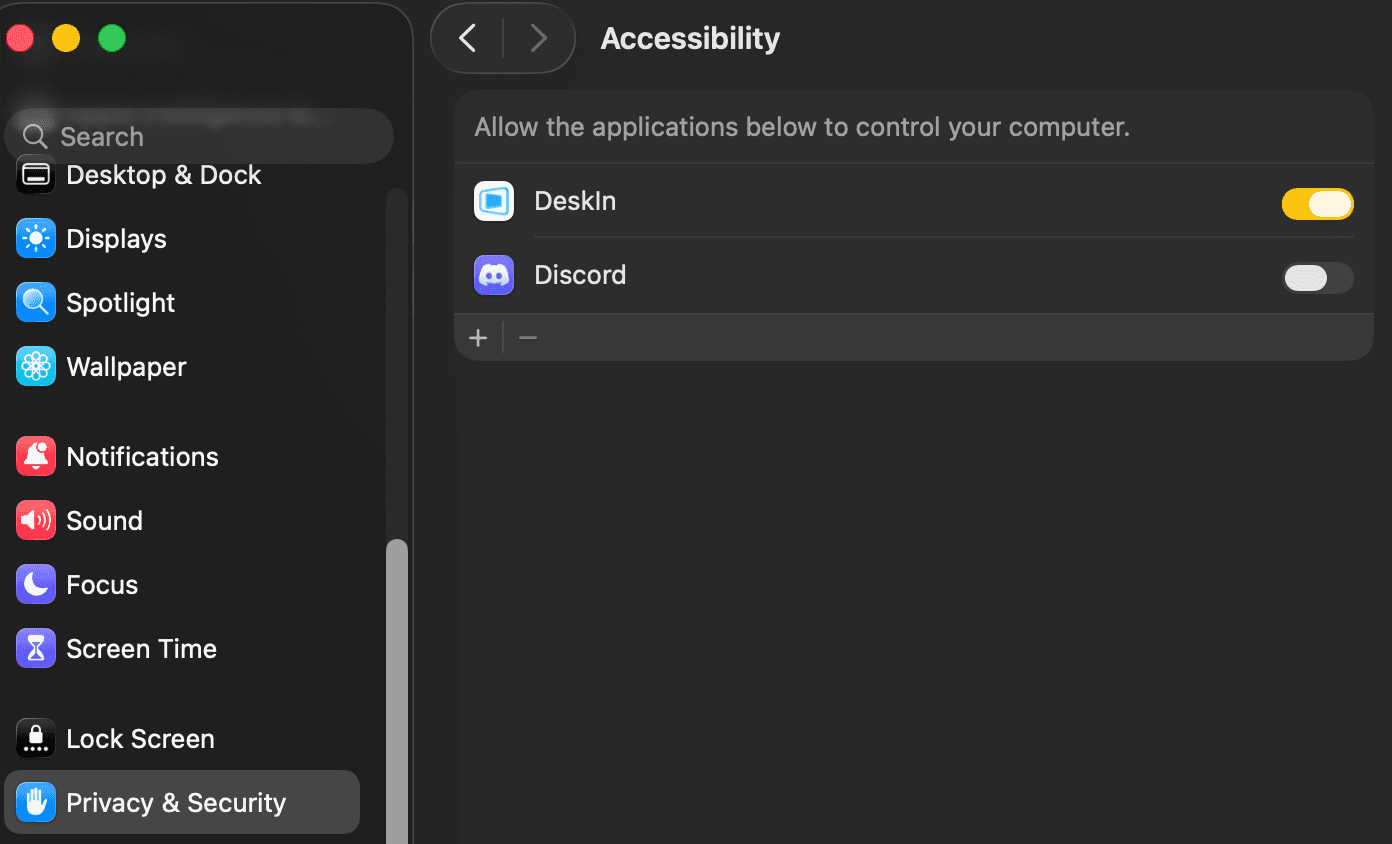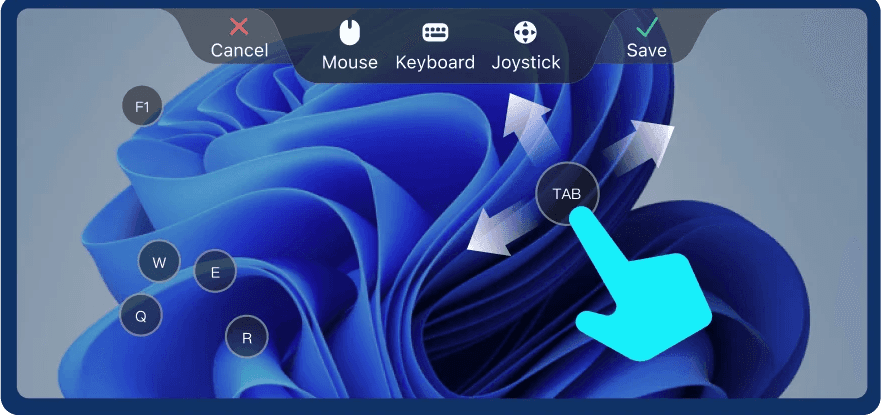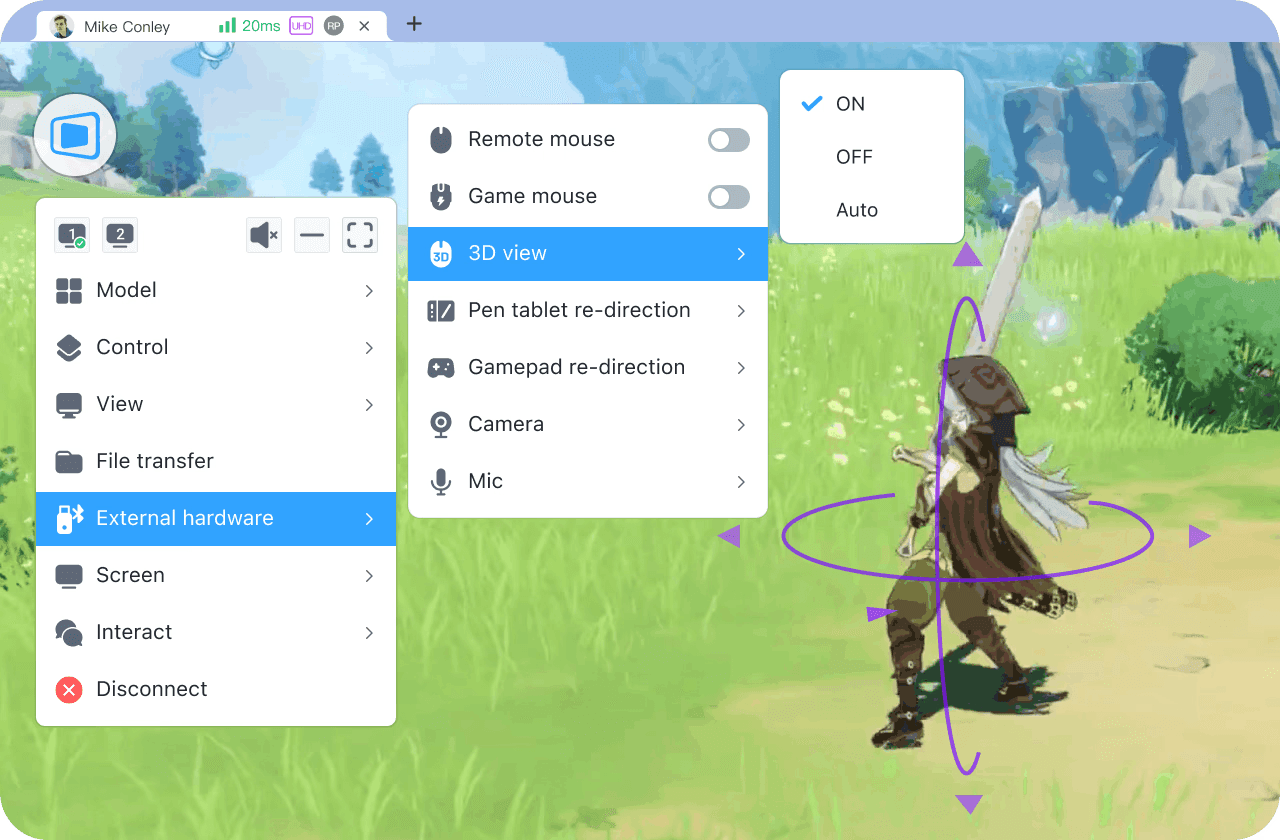You're not alone if you've ever needed to remote access a Windows PC from afar, maybe your mom can't open her email again, undo any weird settings your parents accidentally activate, teach them how to use new programs like Amazon Prime videos, or you left an important file on your office computer. Some of you may even want dual display screen function while remoting access Windows.
First option come out of your mind is Microsoft's remote built-in tools. While completely free, setup can be complex. For a faster, versatile experience, we recommend easy alternatives like DeskIn or other options. Discover the simplest way to remotely access a Windows from Mac, PC, or iPad in the following guides!
👍 You May Also Need:
Way 1. Remote Access Windows from Any Devices by DeskIn

If you're looking for a fast, secure, and hassle-free way to remote access a Windows computer from virtually any device, be it a Mac, Android phone, or iPhone, DeskIn is one of the best tools available. Unlike many traditional remote access tools that require manual setup and network tweaks, DeskIn offers instant remote access within 3 easy steps. Whether you're helping a family member, accessing work files from home, or managing multiple devices across platforms, DeskIn makes the process seamless.
Why Choose DeskIn for Remote Access to Windows?
Support Most Devices: Access your Windows PC from Mac, Android, or iPhone effortlessly.
Easy to Use: Unlike Microsoft, DeskIn lets you get started in minutes without tech headaches.
High-Definition, Smooth, Low-Latency: Enjoy crystal-clear visuals and near-instant responsiveness, even over weaker networks.
Advanced Features: Includes 4:4:4 color accuracy for creatives and game controller input support for gamers.
Perfect for Personal or Professional Use: Whether you're remote working, gaming, or providing tech help, DeskIn is versatile enough for any scenario.
Step 1. Install DeskIn on Both Devices
Download and install DeskIn on your Windows PC (the device you want to access) and the remote device you'll use to connect (Mac, Android, or iPhone). You can find the appropriate version from the official DeskIn website.
Step 2. Create an Account and Sign In
Open DeskIn on both devices and sign in with the same account. For security, DeskIn will ask you to verify and authorize each device via email the first time you log in.

Step 3. Start the Remote Session
Once both devices are linked to your account, use the device ID and password to connect. Then, select the Windows PC from your device list. Click to start a remote control session, and you'll be instantly connected.

📖 More to Explore:
Way 2. Enable Remote Access via Microsoft Remote Desktop (Built-in)

If you primarily use Windows devices, Microsoft's built-in Remote Desktop Protocol (RDP) offers a secure and reliable way to access your Windows PC from virtually anywhere. It's especially useful for working on files, running applications, or managing settings remotely without needing extra software. RDP supports remote connections from other Windows PCs as well as Mac, Android, and iOS devices via the Microsoft Windows App.
However, it does require some one-time setup on the target PC, and remote access is only possible when that PC is powered on and connected to the internet. Here's how to set it up and start using it effectively:
Step 1. Go to "Start > Settings > System > Remote Desktop", then toggle on "Enable Remote Desktop". Make sure to note your PC name because you'll need it when connecting from another device.
Step 2. Click "Select users that can remotely access this PC" if you want to allow additional accounts or restrict access.

Step 3. On another Windows PC, open the "Remote Desktop Connection" tool and enter the PC name. On Mac, iOS, or Android, download the "Microsoft App".
Step 4. Launch the app, enter the PC name, and click "Connect". Enter your "Windows account credentials" when prompted to establish the connection.
Note: Microsoft Remote Desktop is not available in Windows Home Version, therefore, if your PC is Home Edit, you should consider the first method, DeskIn, which supports any old versions like Windows 7, as well as any new versions.
📖 For details, check the guides you need:
Way 3. Remote Desktop Access Windows via Chrome Remote Desktop (Quick Setup)

If you're looking for a quick and easy way to access your Windows PC from MacBook/iMac remotely, Chrome Remote Desktop is an excellent choice. It's a free, browser-based solution that works across various platforms, including Windows, Mac, iOS, and Android. One of the major advantages of Chrome Remote Desktop is its simplicity, it doesn't require complex setups or configurations, making it a popular option for users who need a fast, hassle-free connection.
Chrome Remote Desktop is an ideal solution for casual users or those who need a simple, no-fuss way to access their Windows PCs. While it doesn't have as many advanced features as other remote access tools, it's an easy-to-use option that gets the job done for most basic remote control needs. Now, let's walk through the steps to get you connected.
Step 1. Install Google Chrome on both your Windows PC and the device you want to use for remote access (Mac, Android, or iPhone).
Step 2. Follow the instructions to enable access on your Windows PC and generate a PIN to secure the connection.

Step 3. On your remote device (whether it's a browser or the app), open Chrome Remote Desktop.
Step 4. Select your target PC from the device list, then enter the PIN you created earlier to establish the connection.
Way 4. Remote Access Windows by Quick Assist (Free & Easy)
Need to access server remotely Windows in a flash? Quick Assist is your built-in lifesaver! Pre-installed on Windows 10 & 11, this free tool requires just a Microsoft account. In under two minutes, you'll troubleshoot issues or guide others effortlessly.
Quick Assist Setup Guide:
STEP 1: On the Windows PC you want to access remotely, open Start > All apps > "Microsoft Store". Search for Quick Assist and select it.
STEP 2: Click Get or "Install". Grant permissions if prompted.
STEP 3: Launch Quick Assist. Choose "Help someone", then share the 6-digit code with your helper.

STEP 4: After they enter the code, approve the connection. Your helper can now see your screen and use tools like laser pointers, annotations, or chat.
STEP 5: For full control, your helper selects "Request control"—approve the prompt. To end, click "Leave".
Way 5. Turn on Remote Access via Apple Remote Desktop (Apple Devices)
Need remote access from Mac to Windows or remote access Mac? Apple Remote Desktop ($79.99 via Mac App Store) delivers powerful enterprise-grade features. Ideal for advanced users, it lets you navigate remote Finder menus, transfer files/folders, and automate tasks—though setup requires technical familiarity.
Setup Guide:
STEP 1: On your "Mac", open the Apple menu > "System Preferences".
STEP 2: Click Sharing > Remote Management checkbox.

STEP 3: Enable Remote Management and configure permissions.

STEP 4: Select allowed tasks (screen control, file transfer, etc.) for remote users.
STEP 5: On the "Windows PC", enable Remote Desktop (Pro/Enterprise edition required). Use ARD's Network view to locate the PC, then "Connect". End sessions via the menu bar icon.
6 More Tools to Remote Access Windows
Beyond these 5 methods, we'll briefly spotlight 6 powerful remote access software for Windows—some with unique perks for your needs:
HelpWire: Free for personal and business use with simple setup and dual-screen support.
Zoho Assist: Browser-based, supports dual monitors, and delivers smooth performance without drops.
RustDesk: Free open-source tool compatible with Linux, macOS, and other systems for cross-OS Windows access.
Parsec: Offers 4K streaming, ultra-low latency (60fps), but dual-screen requires a paid plan.
AnyDesk: Cross-platform (Chromebook→Windows, Linux→Windows), though keys like Ctrl/Alt may occasionally stick.
TeamViewer: Industry-known but expensive; frequent disconnects and aggressive commercial-use detection limit usability.
Final Thoughts
Choosing the right method for remote access to Windows largely depends on your platform, technical needs, and how you intend to use the connection. For the most flexible, powerful, and cross-platform solution, DeskIn stands out as the best overall choice for seamless access to your Windows PC. Whether you're using it for personal tasks, business operations, or even gaming, DeskIn provides a comprehensive feature set to meet your needs with ease!
You're not alone if you've ever needed to remote access a Windows PC from afar, maybe your mom can't open her email again, undo any weird settings your parents accidentally activate, teach them how to use new programs like Amazon Prime videos, or you left an important file on your office computer. Some of you may even want dual display screen function while remoting access Windows.
First option come out of your mind is Microsoft's remote built-in tools. While completely free, setup can be complex. For a faster, versatile experience, we recommend easy alternatives like DeskIn or other options. Discover the simplest way to remotely access a Windows from Mac, PC, or iPad in the following guides!
👍 You May Also Need:
Way 1. Remote Access Windows from Any Devices by DeskIn

If you're looking for a fast, secure, and hassle-free way to remote access a Windows computer from virtually any device, be it a Mac, Android phone, or iPhone, DeskIn is one of the best tools available. Unlike many traditional remote access tools that require manual setup and network tweaks, DeskIn offers instant remote access within 3 easy steps. Whether you're helping a family member, accessing work files from home, or managing multiple devices across platforms, DeskIn makes the process seamless.
Why Choose DeskIn for Remote Access to Windows?
Support Most Devices: Access your Windows PC from Mac, Android, or iPhone effortlessly.
Easy to Use: Unlike Microsoft, DeskIn lets you get started in minutes without tech headaches.
High-Definition, Smooth, Low-Latency: Enjoy crystal-clear visuals and near-instant responsiveness, even over weaker networks.
Advanced Features: Includes 4:4:4 color accuracy for creatives and game controller input support for gamers.
Perfect for Personal or Professional Use: Whether you're remote working, gaming, or providing tech help, DeskIn is versatile enough for any scenario.
Step 1. Install DeskIn on Both Devices
Download and install DeskIn on your Windows PC (the device you want to access) and the remote device you'll use to connect (Mac, Android, or iPhone). You can find the appropriate version from the official DeskIn website.
Step 2. Create an Account and Sign In
Open DeskIn on both devices and sign in with the same account. For security, DeskIn will ask you to verify and authorize each device via email the first time you log in.

Step 3. Start the Remote Session
Once both devices are linked to your account, use the device ID and password to connect. Then, select the Windows PC from your device list. Click to start a remote control session, and you'll be instantly connected.

📖 More to Explore:
Way 2. Enable Remote Access via Microsoft Remote Desktop (Built-in)

If you primarily use Windows devices, Microsoft's built-in Remote Desktop Protocol (RDP) offers a secure and reliable way to access your Windows PC from virtually anywhere. It's especially useful for working on files, running applications, or managing settings remotely without needing extra software. RDP supports remote connections from other Windows PCs as well as Mac, Android, and iOS devices via the Microsoft Windows App.
However, it does require some one-time setup on the target PC, and remote access is only possible when that PC is powered on and connected to the internet. Here's how to set it up and start using it effectively:
Step 1. Go to "Start > Settings > System > Remote Desktop", then toggle on "Enable Remote Desktop". Make sure to note your PC name because you'll need it when connecting from another device.
Step 2. Click "Select users that can remotely access this PC" if you want to allow additional accounts or restrict access.

Step 3. On another Windows PC, open the "Remote Desktop Connection" tool and enter the PC name. On Mac, iOS, or Android, download the "Microsoft App".
Step 4. Launch the app, enter the PC name, and click "Connect". Enter your "Windows account credentials" when prompted to establish the connection.
Note: Microsoft Remote Desktop is not available in Windows Home Version, therefore, if your PC is Home Edit, you should consider the first method, DeskIn, which supports any old versions like Windows 7, as well as any new versions.
📖 For details, check the guides you need:
Way 3. Remote Desktop Access Windows via Chrome Remote Desktop (Quick Setup)

If you're looking for a quick and easy way to access your Windows PC from MacBook/iMac remotely, Chrome Remote Desktop is an excellent choice. It's a free, browser-based solution that works across various platforms, including Windows, Mac, iOS, and Android. One of the major advantages of Chrome Remote Desktop is its simplicity, it doesn't require complex setups or configurations, making it a popular option for users who need a fast, hassle-free connection.
Chrome Remote Desktop is an ideal solution for casual users or those who need a simple, no-fuss way to access their Windows PCs. While it doesn't have as many advanced features as other remote access tools, it's an easy-to-use option that gets the job done for most basic remote control needs. Now, let's walk through the steps to get you connected.
Step 1. Install Google Chrome on both your Windows PC and the device you want to use for remote access (Mac, Android, or iPhone).
Step 2. Follow the instructions to enable access on your Windows PC and generate a PIN to secure the connection.

Step 3. On your remote device (whether it's a browser or the app), open Chrome Remote Desktop.
Step 4. Select your target PC from the device list, then enter the PIN you created earlier to establish the connection.
Way 4. Remote Access Windows by Quick Assist (Free & Easy)
Need to access server remotely Windows in a flash? Quick Assist is your built-in lifesaver! Pre-installed on Windows 10 & 11, this free tool requires just a Microsoft account. In under two minutes, you'll troubleshoot issues or guide others effortlessly.
Quick Assist Setup Guide:
STEP 1: On the Windows PC you want to access remotely, open Start > All apps > "Microsoft Store". Search for Quick Assist and select it.
STEP 2: Click Get or "Install". Grant permissions if prompted.
STEP 3: Launch Quick Assist. Choose "Help someone", then share the 6-digit code with your helper.

STEP 4: After they enter the code, approve the connection. Your helper can now see your screen and use tools like laser pointers, annotations, or chat.
STEP 5: For full control, your helper selects "Request control"—approve the prompt. To end, click "Leave".
Way 5. Turn on Remote Access via Apple Remote Desktop (Apple Devices)
Need remote access from Mac to Windows or remote access Mac? Apple Remote Desktop ($79.99 via Mac App Store) delivers powerful enterprise-grade features. Ideal for advanced users, it lets you navigate remote Finder menus, transfer files/folders, and automate tasks—though setup requires technical familiarity.
Setup Guide:
STEP 1: On your "Mac", open the Apple menu > "System Preferences".
STEP 2: Click Sharing > Remote Management checkbox.

STEP 3: Enable Remote Management and configure permissions.

STEP 4: Select allowed tasks (screen control, file transfer, etc.) for remote users.
STEP 5: On the "Windows PC", enable Remote Desktop (Pro/Enterprise edition required). Use ARD's Network view to locate the PC, then "Connect". End sessions via the menu bar icon.
6 More Tools to Remote Access Windows
Beyond these 5 methods, we'll briefly spotlight 6 powerful remote access software for Windows—some with unique perks for your needs:
HelpWire: Free for personal and business use with simple setup and dual-screen support.
Zoho Assist: Browser-based, supports dual monitors, and delivers smooth performance without drops.
RustDesk: Free open-source tool compatible with Linux, macOS, and other systems for cross-OS Windows access.
Parsec: Offers 4K streaming, ultra-low latency (60fps), but dual-screen requires a paid plan.
AnyDesk: Cross-platform (Chromebook→Windows, Linux→Windows), though keys like Ctrl/Alt may occasionally stick.
TeamViewer: Industry-known but expensive; frequent disconnects and aggressive commercial-use detection limit usability.
Final Thoughts
Choosing the right method for remote access to Windows largely depends on your platform, technical needs, and how you intend to use the connection. For the most flexible, powerful, and cross-platform solution, DeskIn stands out as the best overall choice for seamless access to your Windows PC. Whether you're using it for personal tasks, business operations, or even gaming, DeskIn provides a comprehensive feature set to meet your needs with ease!

Play x Work
All at Once
DeskIn Remote Game
only $14.32 USD 🎉 Limited on July 16-31
Add promo code: deskinsummer1






